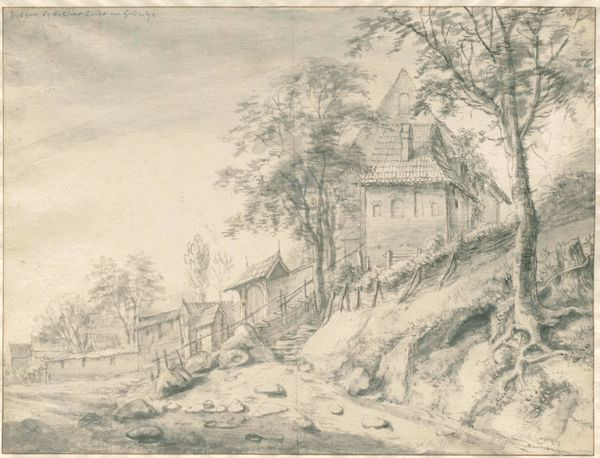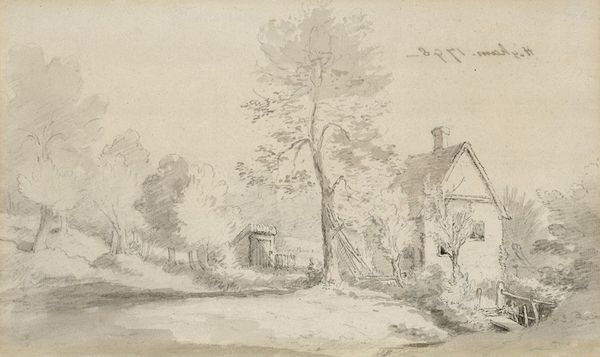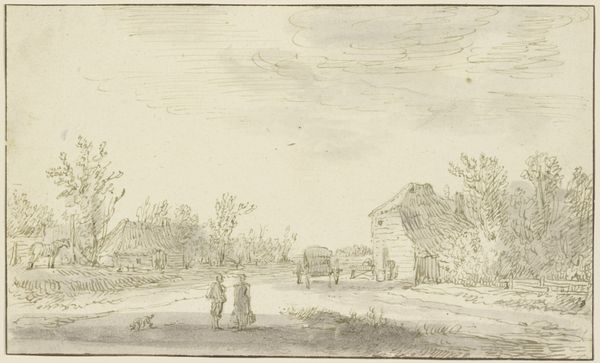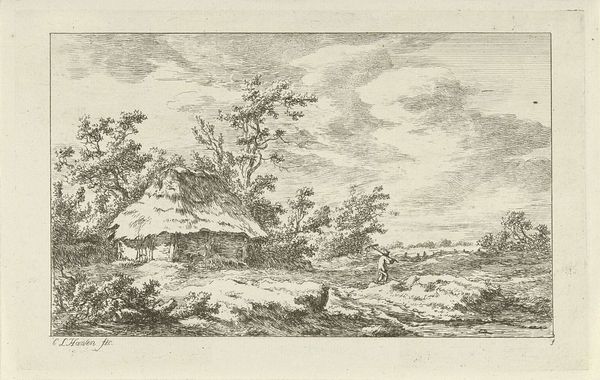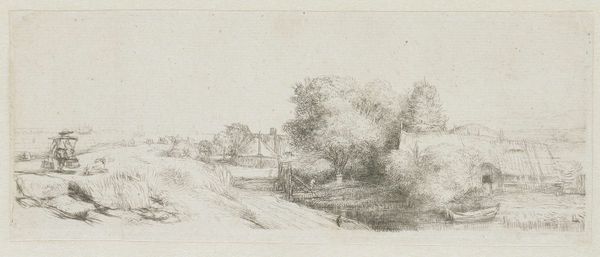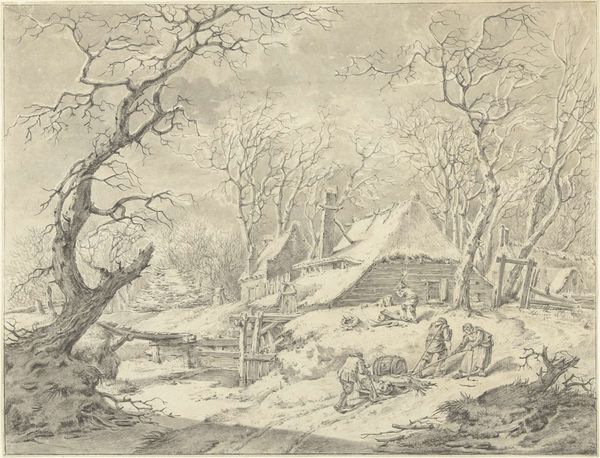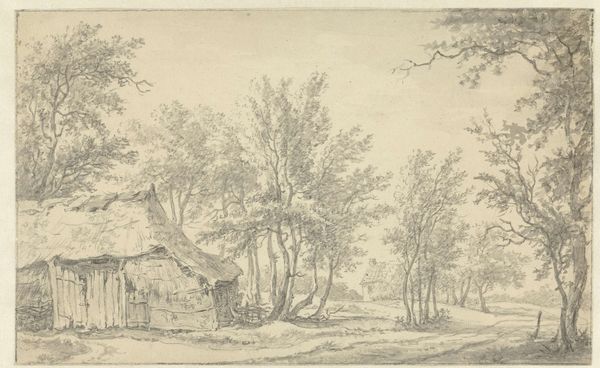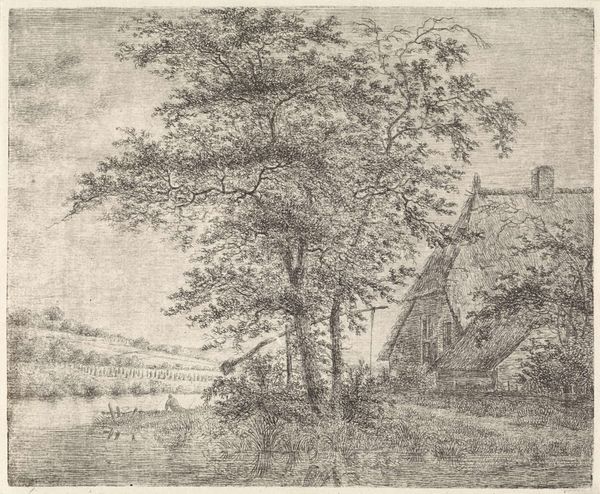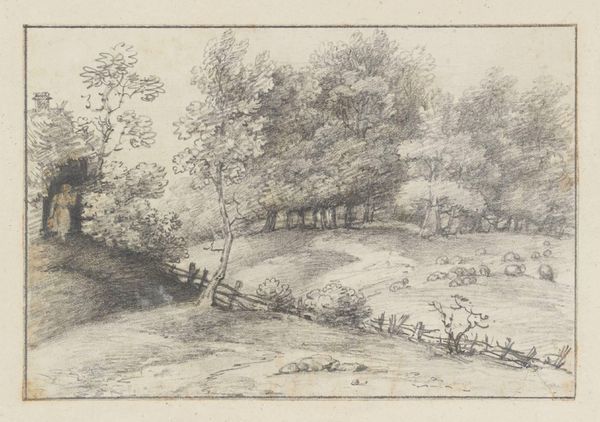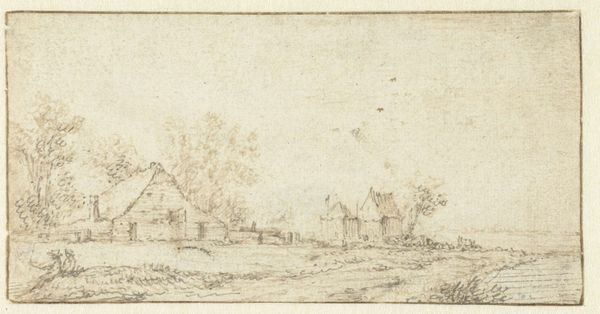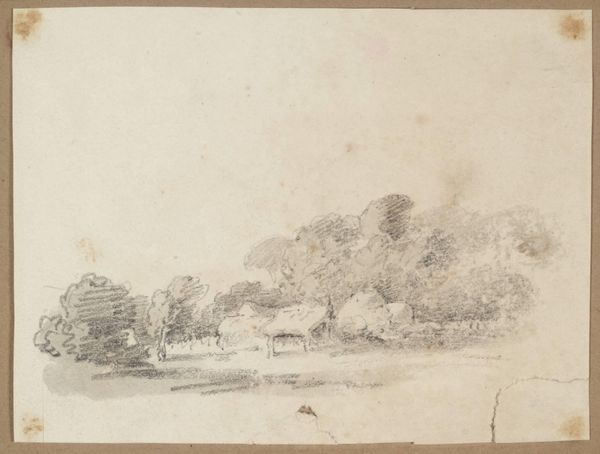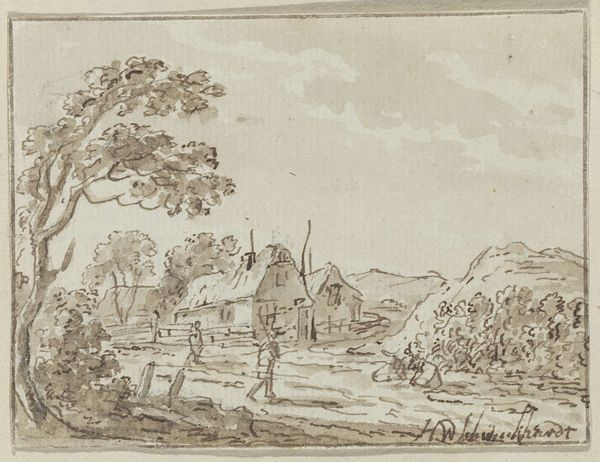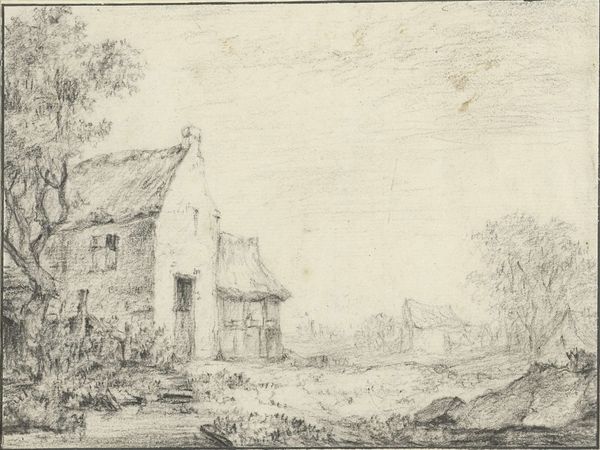
drawing, pencil
drawing
landscape
pencil
realism
Dimensions: height 44 mm, width 65 mm
Copyright: Rijks Museum: Open Domain
Curator: This is "Landschap met huis," or "Landscape with House," created by Maxime Lalanne sometime between 1837 and 1886. The medium is simple, yet effective: pencil on paper. Editor: A rather subdued mood hangs over this piece. It's almost ghostly. The blurred lines create a sense of transience, like a half-remembered dream of a rural landscape. Curator: Interesting observation. The social context surrounding Lalanne at that time definitely lends weight to a melancholic reading. He was deeply engaged with the burgeoning Realist movement, documenting the everyday lives of the working class and the shifting rural landscapes under industrialization. The use of pencil here, a readily available material, emphasizes accessibility in artmaking, moving away from grand historical narratives to capture quotidian moments. Editor: So, what significance does this particular house hold? Houses are rich in symbolic meaning across cultures. It appears quite humble, almost fading into the landscape. It brings to mind the archetype of a family home, a site of warmth, and personal histories. Its haziness could represent nostalgia or a lost way of life in this time of great change. Curator: The house anchors the whole composition, offering a stable center amid the apparent artistic method. The pencil strokes themselves become a testament to labor—the hand moving across the page. We might ask what kind of life occurred in the creation of this image and also consider the relationship of this artist to his chosen material. Editor: I am also drawn to the skeletal-looking trees, like visual symbols of death or endings. Maybe the combination of this house with the trees invites a sense of reflection on life cycles and the impermanence of things, that feels especially pertinent within the shifts brought on by industrialization. Curator: Very astute. Consider how mass production and capitalist demands transform even something as essential as paper and graphite into sites of social and political inscription. Lalanne used such modest supplies to portray what industrial progress changed about lives, values, and society. Editor: Examining it this way gives the picture new depths. Seeing a small, unpretentious house under an ominous sky now highlights to me its visual narrative about lost cultural continuity, so much larger than it originally appeared. Curator: Absolutely, seeing the intersection between materials, process, and artist labor allows us to fully grasp what an unvarnished yet evocative image of social change and artistic interpretation can impart.
Comments
No comments
Be the first to comment and join the conversation on the ultimate creative platform.
